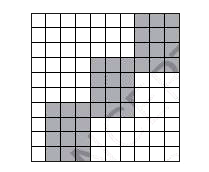Ten Per Cent Law
Step-by-Step Text Solution for "Ten Per Cent Law"
1. Understanding the Concept: The Ten Per Cent Law, also known as the 10% Law, refers to the energy transfer efficiency between different trophic levels in an ecosystem. It states that when energy is transferred from one trophic level to the next, only about 10% of the energy is available for the higher trophic level, while the remaining 90% is lost primarily through metabolic processes and as heat.
2. Origin of the Law: This concept was introduced by the scientist Lindeman in 1942. It is related to the second law of thermodynamics, which discusses the entropy in energy transfer systems.
3. Energy Transfer in Trophic Levels: In an ecosystem, energy flows through various trophic levels, starting from producers (like plants) to primary consumers (herbivores), then to secondary consumers (carnivores), and finally to decomposers. At each level, energy is utilized for growth, reproduction, and metabolic processes.
4. Energy Loss: During the transfer of energy from one trophic level to the next, a significant amount of energy (approximately 90%) is lost. This loss occurs due to:
- Respiration: Organisms use energy for their metabolic activities, which results in energy loss.
- Heat: Energy is also lost in the form of heat during these metabolic processes.
5. Example of Energy Transfer:
- Suppose there are 2000 units of solar energy available.
- Plants (producers) absorb about 1% of this energy, which equals 20 units.
- The remaining energy (1980 units) is lost to the environment.
- When herbivores consume plants, they receive only about 10% of the energy from the plants, which is 2 units (10% of 20 units).
- Again, 90% of the energy (18 units) is lost during this transfer.
- Carnivores that consume herbivores will receive only 0.2 units of energy (10% of 2 units), with the rest being lost.
6. Conclusion: The Ten Per Cent Law illustrates the inefficiency of energy transfer in ecosystems and emphasizes the importance of producers in maintaining energy flow. Understanding this concept is crucial for studying ecological relationships and energy dynamics within ecosystems.
- Respiration: Organisms use energy for their metabolic activities, which results in energy loss.
- Heat: Energy is also lost in the form of heat during these metabolic processes.
- Suppose there are 2000 units of solar energy available.
- Plants (producers) absorb about 1% of this energy, which equals 20 units.
- The remaining energy (1980 units) is lost to the environment.
- When herbivores consume plants, they receive only about 10% of the energy from the plants, which is 2 units (10% of 20 units).
- Again, 90% of the energy (18 units) is lost during this transfer.
- Carnivores that consume herbivores will receive only 0.2 units of energy (10% of 2 units), with the rest being lost.
Similar Questions
Knowledge Check
The ''10 per cent law'' is related to:
AMendelian geneticsBNon-Mendelian geneticsCEnergy transfer from lower trophic level to higher trophic levelDEnergy consumption during photosynthesis in C4 plantsA wire of a certain material is stretched slowly by ten percent. Its new resistance and specific resistance become respectively.
A1.1 times , 1.1 timesB1.2 time, 1.1 timesC1.21 times , sameDBoth remain the sameA dealer gives as much discount (in per cent) as the markup (in per cent) above the cost price. What is the profit or loss per cent?
A10%B1%C4%Dcan't be determined
What is 10 per cent law ?
View SolutionWho proposed 10 per cent law ?
View SolutionA dealer gives as much discount (in per cent) as the markup (in per cent) above the cost price. What is the profit or loss per cent?
View SolutionSimple interest on a certain sum is 1625 of the sum. The rate per cent if the rate per cent and time (in years) are equal, is
View SolutionIn a city 20 per cent of the population travels by car, 40 per cent travels by bus and 8 per cent travels by both car and bus. Then percentage of persons travelling by car or bus is
View Solution

